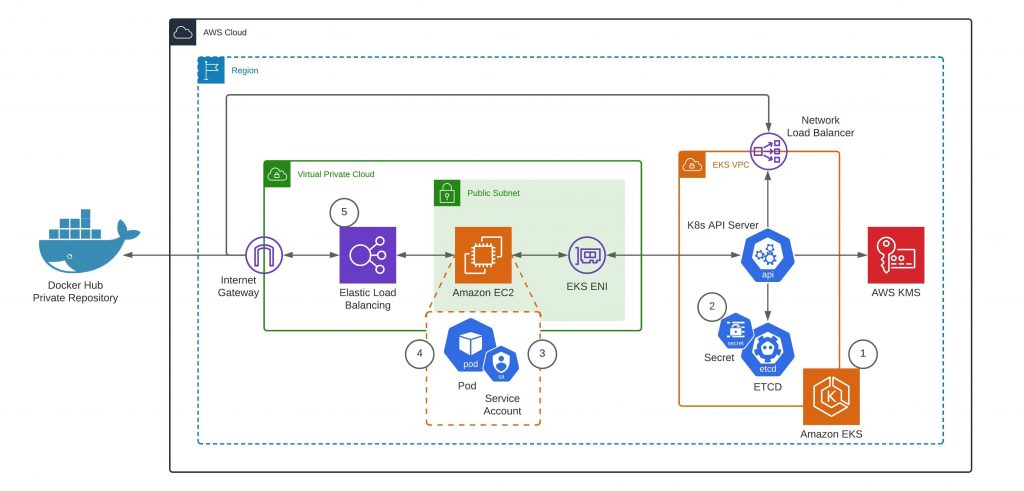Containers
Category: Compute
Authenticating with Docker Hub for AWS Container Services
Docker Hub has recently updated its terms of service to introduce rate limits for container image pulls. While these limits don’t apply to accounts under a Pro or Team plan, anonymous users are limited to 100 pulls per 6 hours per IP address, and authenticated free accounts are limited to 200 pulls per 6 hours. […]
Using EBS Snapshots for persistent storage with your EKS cluster
Originally, containers were a great fit for stateless applications. However, for many use cases there is a need for persistent storage, without which stateful workloads are not possible. Kubernetes first introduced support for stateful workloads with in-tree volume plugins, meaning that the plugin code was part of the core Kubernetes code and shipped with the […]
Latest updates to AWS Fargate for Amazon ECS
Recently, we announced features to improve the configuration and metric gathering experience of your tasks deployed via AWS Fargate for Amazon ECS. Based off of customer feedback, we added the following features: Environment file support Deeper integration with AWS Secrets Manager using secret versions and JSON keys More granular network metrics, as well as additional […]
Cross region replication in Amazon ECR has landed
Michael Brown and Michael Hausenblas Replicating container images across regions in Amazon Elastic Container Registry (ECR) automatically has been one of the most asked features and we’re glad to be able to share the good news with you: it has landed. Where previously you had to implement the replication yourself you can now leave the […]
Ship and visualize your Istio virtual service traces with AWS X-Ray
AWS X-Ray is a managed distributed tracing system that helps customers gain end-to-end visibility of requests and provides rich visualization of connected services. This post will show how customers can integrate AWS X-Ray as a backend for Zipkin traces generated from services in a Istio service mesh.
Operating a multi-regional stateless application using Amazon EKS
This post was contributed by Re Alvarez Parmar, Sr Solutions Architect, and Avi Harari, Technical Account Manager. One of the key benefits of operating on AWS is how easily customers can use AWS’s global footprint to run their workloads in multiple regions. Whether you need a multi-region architecture to support disaster recovery or bring your […]
Building a GitOps pipeline with Amazon EKS
This post is contributed by Anita Buehrle, Director of Content at Weaveworks. In the first part of this series, we discussed the history of GitOps, its benefits, and how it works. Now that you have an idea of what GitOps is all about, we’re going to dive into how to configure a GitOps pipeline with […]
Automating Amazon EKS with GitOps
This post is contributed by Anita Buehrle, Director of Content at Weaveworks. Companies want to go fast; they need to deploy more often, more reliably, and preferably with less overhead. GitOps is a fast and secure method for developers to manage and update complex applications and infrastructure running in Kubernetes. GitOps is an operations and […]
Running microservices in Amazon EKS with AWS App Mesh and Kong
NOTICE: October 04, 2024 – This post no longer reflects the best guidance for configuring a service mesh with Amazon EKS and its examples no longer work as shown. Please refer to newer content on Amazon VPC Lattice. ——– This post was created in collaboration with Claudio Acquaviva, Solution Engineer, Kong, and Morgan Davies, Kong […]
Results of the 2020 AWS Container Security Survey
In 2019 we carried out the first AWS Container Security Survey and now we have the results of this year’s survey for you available. As in 2019, we conducted an anonymous survey throughout 2020 amongst container users on AWS. From the 655 people who visited the survey, 295 started it and 156 completed it (completion […]









